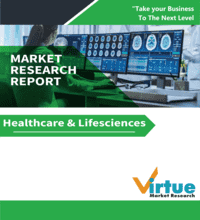Aseptic Sampling Market Size (2025 – 2030)
The Global Aseptic Sampling Market was valued at USD 980 million in 2024 and is projected to reach USD 2.1 billion by 2030, growing at a CAGR of 16.4% during the forecast period.
Aseptic sampling is a critical process in biopharmaceutical, pharmaceutical, and food industries, ensuring sterility, contamination control, and regulatory compliance in production processes.
Rising demand for biopharmaceuticals, stringent regulations for contamination control, and advancements in single-use aseptic sampling technologies are driving market growth. The increasing shift toward automated aseptic sampling and the integration of real-time monitoring solutions are expected to further propel market expansion.
Key Market Insights
-
Manual aseptic sampling dominates the market, accounting for 60% of revenue share, due to its cost-effectiveness and widespread adoption in pharmaceutical and biopharmaceutical industries.
-
Automated aseptic sampling is growing rapidly at a CAGR of 16.2%, driven by demand for real-time contamination monitoring and process automation.
-
North America holds the largest market share at 38%, owing to its strong biopharmaceutical industry and stringent regulatory landscape.
-
Asia-Pacific is the fastest-growing region, expected to expand at a CAGR of 15.8%, due to increasing investments in biopharma manufacturing and food safety regulations.
-
The pharmaceutical and biotechnology segment accounts for over 70% of market share, as aseptic sampling is essential in bioprocessing, vaccine production, and sterile drug manufacturing.
-
Single-use aseptic sampling systems are gaining traction, reducing risks of cross-contamination, cleaning validation, and process downtime.
Global Aseptic Sampling Market Drivers
1. Growing Demand for Biopharmaceuticals and Sterile Drug Production is driving the market growth
The biopharmaceutical industry is expanding rapidly, driven by the increasing demand for monoclonal antibodies, gene therapies, and vaccines. These products require strict sterility and contamination control, fueling demand for aseptic sampling in upstream and downstream processing. Additionally, the COVID-19 pandemic accelerated biopharmaceutical manufacturing, increasing reliance on single-use aseptic sampling solutions to ensure fast and contamination-free production of biologics.
2. Stringent Regulatory Standards for Contamination Control is driving the market growth
Regulatory bodies such as the FDA, EMA, and WHO have imposed stringent guidelines on sterility testing and contamination control in pharmaceutical and biopharmaceutical production. Compliance with GMP (Good Manufacturing Practices) and cGMP (Current Good Manufacturing Practices) mandates the use of validated aseptic sampling techniques to maintain product quality. For example, Annex 1 of the EU GMP guidelines emphasizes the importance of risk-based approaches in aseptic processing, encouraging the adoption of single-use and automated sampling systems.
3. Advancements in Single-Use and Automated Aseptic Sampling Technologies is driving the market growth
The shift toward single-use aseptic sampling is gaining momentum due to its benefits, including reduced contamination risks, faster turnaround times, and cost savings in cleaning validation. Companies are increasingly adopting pre-assembled, gamma-sterilized sampling systems to enhance process efficiency.
Automated aseptic sampling technologies are also being developed to enable real-time microbial monitoring, reducing human intervention and minimizing contamination risks.
Global Aseptic Sampling Market Challenges and Restraints
1. High Costs Associated with Automated Aseptic Sampling Systems is restricting the market growth
While automated aseptic sampling improves process efficiency, its high initial investment and maintenance costs limit adoption among small and mid-sized biopharmaceutical manufacturers.
Additionally, transitioning from manual to automated systems requires significant process validation and regulatory approval, adding complexity to implementation.
2. Limited Standardization in Aseptic Sampling Practices is restricting the market growth
The lack of universal standards for aseptic sampling procedures creates variability in implementation across industries. Different regulatory agencies and manufacturers adopt customized aseptic sampling techniques, leading to challenges in reproducibility and validation.
Efforts are underway to harmonize regulatory guidelines, but achieving global standardization remains a challenge.
Market Opportunities
The convergence of Industry 4.0 principles and digital bioprocessing is creating a fertile ground for innovation in automated and real-time aseptic sampling. The increasing connectivity and data availability within modern biomanufacturing facilities enable the seamless integration of aseptic sampling technologies with process control systems. This integration allows for real-time data acquisition, analysis, and feedback, leading to improved process monitoring and control. Furthermore, the application of artificial intelligence (AI) and machine learning algorithms to aseptic sampling data opens up new possibilities for predictive maintenance and contamination control. AI-driven systems can analyze vast datasets to identify patterns and predict potential contamination events before they occur, allowing for proactive interventions and minimizing production downtime. Beyond developed markets, the rapid expansion of biopharmaceutical manufacturing in emerging economies, including India, China, and Brazil, presents a significant growth opportunity for the aseptic sampling market. These regions are witnessing increased investments in healthcare infrastructure and biomanufacturing capacity, driving the demand for cost-effective and scalable aseptic sampling solutions. Manufacturers in these markets are seeking technologies that not only meet international quality standards but also align with local economic conditions. As a result, the development of innovative, affordable, and easily deployable aseptic sampling solutions will be crucial to cater to the specific needs of these emerging markets. The combination of technological advancements, growing biopharmaceutical production, and increasing regulatory scrutiny is expected to propel the aseptic sampling market forward in the coming years.
ASEPTIC SAMPLING MARKET REPORT COVERAGE:
|
REPORT METRIC |
DETAILS |
|
Market Size Available |
2024 - 2030 |
|
Base Year |
2024 |
|
Forecast Period |
2025 - 2030 |
|
CAGR |
16.4% |
|
Segments Covered |
By Type, Technique, Application, and Region |
|
Various Analyses Covered |
Global, Regional & Country Level Analysis, Segment-Level Analysis, DROC, PESTLE Analysis, Porter’s Five Forces Analysis, Competitive Landscape, Analyst Overview on Investment Opportunities |
|
Regional Scope |
North America, Europe, APAC, Latin America, Middle East & Africa |
|
Key Companies Profiled |
Sartorius AG, Merck KGaA, Thermo Fisher Scientific Inc., Danaher Corporation, Saint-Gobain, GEA Group AG, Lonza Group, QualiTru Sampling Systems, Keofitt A/S, GEMÜ Group |
Aseptic Sampling Market Segmentation - By Type
-
Manual Aseptic Sampling
-
Automated Aseptic Sampling
Manual aseptic sampling remains dominant due to its widespread use in pharmaceutical and biopharmaceutical applications, but automated aseptic sampling is witnessing rapid growth.
Aseptic Sampling Market Segmentation - By Technique
-
Off-line Sampling
-
On-line Sampling
On-line aseptic sampling is expected to gain traction due to its ability to provide real-time contamination monitoring and process control.
Aseptic Sampling Market Segmentation - By Application
-
Biotechnology
-
Pharmaceutical
-
Food & Beverages
-
Others (Chemical, Cosmetics, etc.)
The pharmaceutical and biotechnology sector stands as the dominant force within the aseptic sampling market, primarily due to the paramount importance of maintaining contamination-free bioprocessing environments. The manufacturing of pharmaceuticals, biologics, and other sterile products demands stringent control over microbial contamination to ensure product safety and efficacy. Aseptic sampling plays a crucial role in these processes, enabling manufacturers to monitor critical parameters, detect potential contaminants, and maintain the sterility of their products. The high value and sensitivity of biopharmaceutical products, coupled with strict regulatory requirements, necessitate the adoption of robust aseptic sampling techniques. Furthermore, the increasing complexity of biomanufacturing processes, including the rise of cell therapies and personalized medicine, further fuels the demand for advanced aseptic sampling solutions. These solutions provide real-time insights into process conditions, enabling manufacturers to make informed decisions and optimize their production workflows. The pharmaceutical and biotechnology sector's unwavering focus on quality, safety, and regulatory compliance solidifies its position as the largest consumer of aseptic sampling technologies.
Aseptic Sampling Market Segmentation - By Region
-
North America
-
Europe
-
Asia-Pacific
-
Latin America
-
Middle East & Africa
North America has long held a dominant position in the aseptic sampling market, boasting a robust biopharmaceutical industry, stringent regulatory frameworks, and a high level of technological adoption. The region's well-established healthcare infrastructure and significant investments in research and development have contributed to the widespread use of advanced aseptic sampling solutions. However, the Asia-Pacific region is rapidly emerging as a key growth driver, exhibiting the highest compound annual growth rate in the market. This surge in demand can be attributed to several factors, including increasing investments in biopharmaceutical manufacturing, expanding healthcare infrastructure, and the implementation of stricter food safety regulations. The growing awareness of product quality and safety, coupled with rising disposable incomes, is fueling the adoption of advanced aseptic sampling technologies across various industries in the Asia-Pacific region. Furthermore, government initiatives promoting local manufacturing and supporting the growth of the pharmaceutical and biotechnology sectors are creating a favorable environment for market expansion. As a result, the Asia-Pacific region is poised to witness significant growth in the aseptic sampling market in the coming years, driven by a combination of factors including increasing biopharmaceutical investments, stricter regulatory oversight, and a growing emphasis on product safety and quality.
COVID-19 Impact Analysis
The COVID-19 pandemic served as a significant catalyst for the aseptic sampling solutions market, particularly within the biopharmaceutical sector. The urgent global demand for vaccines, monoclonal antibodies, and other sterile injectables necessitated rapid scaling of production capacity, placing unprecedented emphasis on stringent contamination control measures. This surge in biopharmaceutical manufacturing directly fueled the widespread adoption of single-use aseptic sampling technologies, which offered a practical and efficient solution for maintaining sterility in high-throughput production environments. Single-use systems minimized the risks of cross-contamination and reduced the need for extensive cleaning and sterilization processes, allowing manufacturers to accelerate production timelines while adhering to rigorous quality standards. Beyond the immediate needs of vaccine and therapeutic production, the pandemic also accelerated a broader shift towards automated and remote monitoring solutions. The need to maintain uninterrupted production schedules, often under challenging circumstances such as lockdowns and workforce limitations, underscored the critical importance of real-time aseptic sampling technologies. These technologies enabled manufacturers to monitor critical process parameters remotely, ensuring continuous quality control and facilitating timely interventions in case of potential contamination events. The pandemic highlighted the limitations of traditional, manual sampling methods, which often involve delays in obtaining results and can introduce potential risks of human error. Consequently, the adoption of automated sampling solutions, coupled with sophisticated data analytics platforms, gained momentum as manufacturers sought to enhance process visibility and ensure regulatory compliance. Furthermore, the pandemic emphasized the need for robust supply chains for critical components, including single-use sampling systems and consumables. Manufacturers began diversifying their sourcing strategies and building stronger relationships with suppliers to mitigate potential disruptions. In the aftermath of the pandemic, the biopharmaceutical industry is expected to maintain a heightened focus on aseptic sampling best practices, with a continuing emphasis on automation, real-time monitoring, and single-use technologies. The lessons learned during this period have solidified the importance of proactive contamination control strategies and the role of advanced aseptic sampling solutions in safeguarding product quality and patient safety.
Latest Trends/Developments
The global aseptic sampling market is experiencing a paradigm shift driven by technological advancements and evolving regulatory landscapes. Automated and real-time monitoring technologies are rapidly transforming traditional aseptic sampling practices, offering enhanced efficiency and precision. Artificial intelligence (AI) is playing a crucial role in this transformation, with AI-driven aseptic sampling solutions being seamlessly integrated into bioprocessing workflows. These intelligent systems enable predictive contamination control by analyzing real-time data and identifying potential risks before they escalate, thus strengthening quality assurance processes. Simultaneously, the adoption of single-use aseptic sampling systems is gaining significant traction, particularly within the realm of continuous bioprocessing. In these continuous manufacturing environments, minimizing downtime and mitigating the risks of cross-contamination are paramount. Pre-sterilized, disposable aseptic sampling solutions offer a streamlined approach, enhancing process efficiency while ensuring adherence to stringent regulatory requirements. Furthermore, regulatory agencies worldwide are increasingly advocating for risk-based approaches to aseptic processing, which is further accelerating the adoption of automated sampling solutions. These automated systems facilitate improved process standardization, ensuring consistent and reliable sampling procedures, and ultimately strengthening regulatory compliance. As industries progress towards the era of smart manufacturing, characterized by interconnected systems and data-driven decision-making, aseptic sampling technologies will be instrumental in safeguarding product integrity and sterility. The integration of aseptic sampling with smart manufacturing platforms will enable real-time data acquisition, analysis, and process optimization, leading to enhanced product quality and safety. In conclusion, the aseptic sampling market is evolving rapidly, embracing automation, AI, and single-use technologies to meet the growing demands for efficient, reliable, and compliant aseptic processing in diverse industries.
Key Players
-
Sartorius AG
-
Merck KGaA
-
Thermo Fisher Scientific Inc.
-
Danaher Corporation
-
Saint-Gobain
-
GEA Group AG
-
Lonza Group
-
QualiTru Sampling Systems
-
Keofitt A/S
-
GEMÜ Group
Chapter 1. Aseptic Sampling Market – Scope & Methodology
1.1 Market Segmentation
1.2 Scope, Assumptions & Limitations
1.3 Research Methodology
1.4 Primary Sources
1.5 Secondary Sources
Chapter 2. Aseptic Sampling Market – Executive Summary
2.1 Market Size & Forecast – (2025 – 2030) ($M/$Bn)
2.2 Key Trends & Insights
2.2.1 Demand Side
2.2.2 Supply Side
2.3 Attractive Investment Propositions
2.4 COVID-19 Impact Analysis
Chapter 3. Aseptic Sampling Market – Competition Scenario
3.1 Market Share Analysis & Company Benchmarking
3.2 Competitive Strategy & Development Scenario
3.3 Competitive Pricing Analysis
3.4 Supplier-Distributor Analysis
Chapter 4. Aseptic Sampling Market Entry Scenario
4.1 Regulatory Scenario
4.2 Case Studies – Key Start-ups
4.3 Customer Analysis
4.4 PESTLE Analysis
4.5 Porters Five Force Model
4.5.1 Bargaining Power of Suppliers
4.5.2 Bargaining Powers of Customers
4.5.3 Threat of New Entrants
4.5.4 Rivalry among Existing Players
4.5.5 Threat of Substitutes
Chapter 5. Aseptic Sampling Market – Landscape
5.1 Value Chain Analysis – Key Stakeholders Impact Analysis
5.2 Market Drivers
5.3 Market Restraints/Challenges
5.4 Market Opportunities
Chapter 6. Aseptic Sampling Market – By Type
6.1 Introduction/Key Findings
6.2 Manual Aseptic Sampling
6.3 Automated Aseptic Sampling
6.4 Y-O-Y Growth trend Analysis By Type
6.5 Absolute $ Opportunity Analysis By Type, 2025-2030
Chapter 7. Aseptic Sampling Market – By Technique
7.1 Introduction/Key Findings
7.2 Off-line Sampling
7.3 On-line Sampling
7.4 Y-O-Y Growth trend Analysis By Technique
7.5 Absolute $ Opportunity Analysis By Technique, 2025-2030
Chapter 8. Aseptic Sampling Market – By Application
8.1 Introduction/Key Findings
8.2 Biotechnology
8.3 Pharmaceutical
8.4 Food & Beverages
8.5 Others (Chemical, Cosmetics, etc.)
8.6 Y-O-Y Growth trend Analysis By Application
8.7 Absolute $ Opportunity Analysis By Application, 2025-2030
Chapter 9. Aseptic Sampling Market , By Geography – Market Size, Forecast, Trends & Insights
9.1 North America
9.1.1 By Country
9.1.1.1 U.S.A.
9.1.1.2 Canada
9.1.1.3 Mexico
9.1.2 By Type
9.1.3 By Technique
9.1.4 By Application
9.1.5 Countries & Segments - Market Attractiveness Analysis
9.2 Europe
9.2.1 By Country
9.2.1.1 U.K
9.2.1.2 Germany
9.2.1.3 France
9.2.1.4 Italy
9.2.1.5 Spain
9.2.1.6 Rest of Europe
9.2.2 By Type
9.2.3 By Technique
9.2.4 By Application
9.2.5 Countries & Segments - Market Attractiveness Analysis
9.3 Asia Pacific
9.3.1 By Country
9.3.1.1 China
9.3.1.2 Japan
9.3.1.3 South Korea
9.3.1.4 India
9.3.1.5 Australia & New Zealand
9.3.1.6 Rest of Asia-Pacific
9.3.2 By Type
9.3.3 By Technique
9.3.4 By Application
9.3.5 Countries & Segments - Market Attractiveness Analysis
9.4 South America
9.4.1 By Country
9.4.1.1 Brazil
9.4.1.2 Argentina
9.4.1.3 Colombia
9.4.1.4 Chile
9.4.1.5 Rest of South America
9.4.2 By Type
9.4.3 By Technique
9.4.4 By Application
9.4.5 Countries & Segments - Market Attractiveness Analysis
9.5 Middle East & Africa
9.5.1 By Country
9.5.1.1 United Arab Emirates (UAE)
9.5.1.2 Saudi Arabia
9.5.1.3 Qatar
9.5.1.4 Israel
9.5.1.5 South Africa
9.5.1.6 Nigeria
9.5.1.7 Kenya
9.5.1.8 Egypt
9.5.1.9 Rest of MEA
9.5.2 By Type
9.5.3 By Technique
9.5.4 By Application
9.5.5 Countries & Segments - Market Attractiveness Analysis
Chapter 10. Aseptic Sampling Market – Company Profiles – (Overview, Product Portfolio, Financials, Strategies & Developments)
10.1 Sartorius AG
10.2 Merck KGaA
10.3 Thermo Fisher Scientific Inc.
10.4 Danaher Corporation
10.5 Saint-Gobain
10.6 GEA Group AG
10.7 Lonza Group
10.8 QualiTru Sampling Systems
10.9 Keofitt A/S
10.10 GEMÜ Group
Download Sample
Choose License Type
2500
4250
5250
6900
Frequently Asked Questions
The market was valued at USD 980 million in 2024 and is projected to reach USD 2.1 billion by 2030, growing at a CAGR of 16.4%.
Key drivers include growing demand for biopharmaceuticals, stringent contamination control regulations, and advancements in automated aseptic sampling technologies.
The market is segmented by Type (Manual, Automated), Technique (Off-line, On-line), and Application (Biotechnology, Pharmaceutical, Food & Beverages, Others).
North America leads with a 38% market share, while Asia-Pacific is the fastest-growing region, driven by biopharmaceutical expansion and food safety regulations.
Leading companies include Sartorius, Merck, Thermo Fisher, Danaher, Saint-Gobain, and GEA Group.




